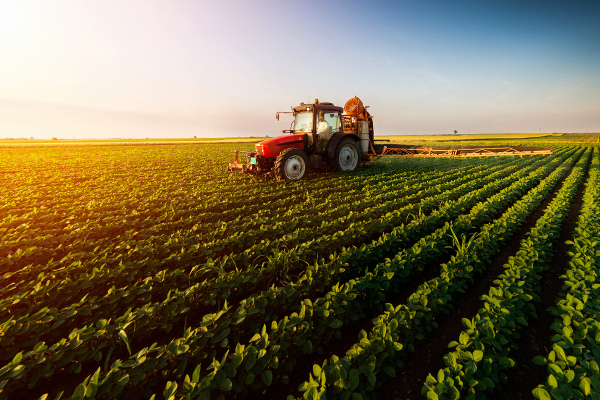In days to come agriculture sector will become more important for the Indian economy as it would not only provide food but also the raw material for industries, fuel (Ethanol) through biomass and also be able to use the wastewater. The experience of the last few years shows how poor agricultural performance can lead to high inflation, rural distress, and political restiveness. A lot of factors such as climate change, population growth, and food security concerns, have driven the agriculture sector to seek more innovative approaches to improve crop yielding and get better farming results.
Many developed and developing countries have realised that commercial agriculture can provide a boost to the economy through export of agricultural products and Brazil is one of them. For the South American nation agriculture sector become even stronger since the economic recession and has always been a massive contributor to its economy. The country is self-sufficient in basic foodstuffs and is a leading exporter of a wide range of crops, including oranges, soybeans, coffee, and cassava, which are grown mainly in the South and Southeast region of Brazil.
The two countries have much in common in agriculture and both have small and marginal holdings farmers. In Brazil, this is called Family Farmer (Portuguese: Agricultores Familiars) and recently have been increased by up to 10 times as expected after introduction of project Microbacias II (English: Microbasins II). Brazil’s success in making agriculture more market-oriented and raising farmer incomes holds many lessons for India.
Microbacias II aims to increase competitiveness and provide market access for family farmers organized in associations and cooperatives throughout the São Paulo state, as well as producer organizations from traditional communities such as quilombolas and indigenous peoples. This aims to increase employment and income opportunities, social inclusion and promote the conservation of natural resources. This project was developed by State Government of São Paulo, Brazil and executed by the Secretaria de Agricultura e Abastecimento (English: Secretariat of Agriculture and Supply), through the Coordenadoria de Assistência Integral “CATI” (English: Coordination of Integral Assistance) and the Secretaria do Meio Ambiente (English: Secretariat of the Environment), by Coordenadoria de Biodiversidade e Recursos Naturais “CBRN” (English: Coordination of Biodiversity and Natural Resources).
In this project actions are taken to ensure increased productivity and improved product quality; the integration of best soil and water management practices with more sustainable as well as competitive production systems; the strengthening of the organization and management capacity of production systems, the demands of products and the viability within the market; the promotion of more active participation of family farmers in their associations and cooperatives to integrate within the productive chains in their regions.
Microbacias II is not restricted to conventional agriculture. It has sought to combine agribusiness with sustainable initiatives such as agro-forestry, organic and hydroponic agriculture. The project supported a total of 358 business proposals from rural organizations, which involved 10,986 producers. In addition to financial support, investments were also made in technical assistance to farmers and in guiding the adoption of sustainable agricultural practices. One of the biggest challenges in adapting such a project concerns scale: while in Brazil family farming is considered areas between 5 and 110 hectares, depending on the type of municipality agriculture, in India rarely exceed 2 hectares. In addition, some cultural factors do not allow the implementation of the Brazilian model. For example, farmers are not allowed to occupy large areas in the middle of the city, such as the São Paulo State Warehouse and Warehouses Company.
With artificial intelligence (AI) and Big Data being a game-changer in the industries, the Indian government has realised the importance and started to leverage this technology in developing the sector. AI can help achieve this vision by contributing to critical areas like Crop Selection and Crop Monitoring, where Crop selection AI-based solutions are ideal for selecting crops based on parameters like soil type, monsoon dates, availability and affordability. Crop Monitoring, where data can be collected using technologies like drones, and satellite imaging, from the fields, and then monitored and analysed by AI-based applications to identify the right solutions.
In July 2019, Indian Ministry of Agriculture signed a Statement of Intent (SoI) with IT major IBM for undertaking a pilot study on weather forecast and soil moisture information in three districts of Bhopal, Rajkot and Nanded in the states of Madhya Pradesh, Gujarat and Maharashtra respectively for the Kharif crop season 2019.
IBM’s “Watson Decision Platform” will give solution in the field of agriculture through (AI) analytics, and predictive insights with unique agricultural Internet of Things (IoT) data and weather technology at rural level or farm level to provide weather forecast and soil moisture information on pro bono basis to help farmers for taking decisions regarding water and crop management for better production and productivity.
Source: FE
Image Courtesy: FoodBusinessnews
You may also like
-
Trade Connect E-platform For Exports Is Single Window, Fast, Accessible And Transformational: Shri Piyush Goyal
-
Dot Simplifies Approval Processes For Telecom Licenses And Wireless Equipment
-
Coal Production and Supply Trends on Positive Trajectory
-
Union Minister To Release Booklets On Promotion Of Indigenous Species & Conservation Of States Fishes
-
2nd India-Japan Finance Dialogue held in Tokyo on 6th September, 2024
